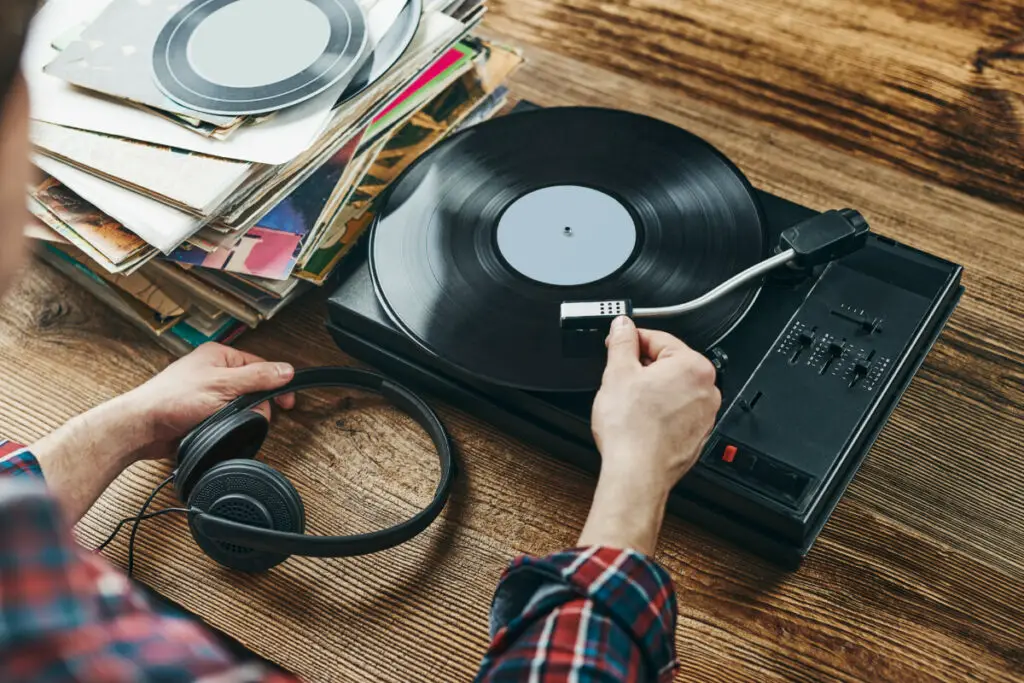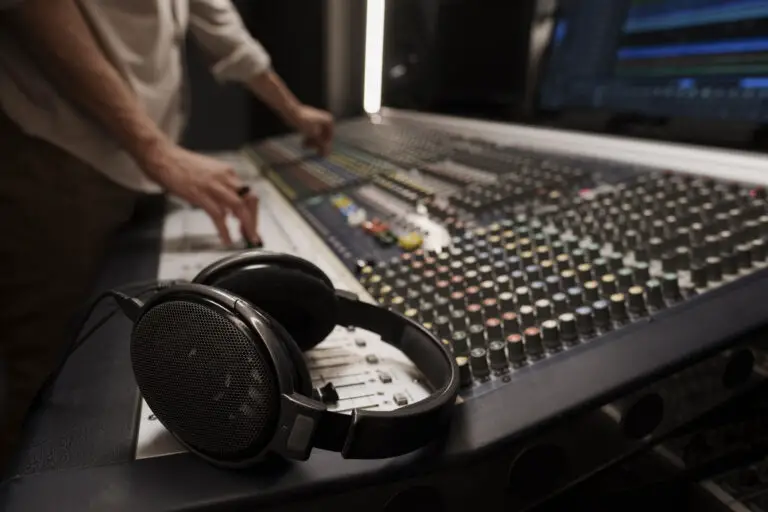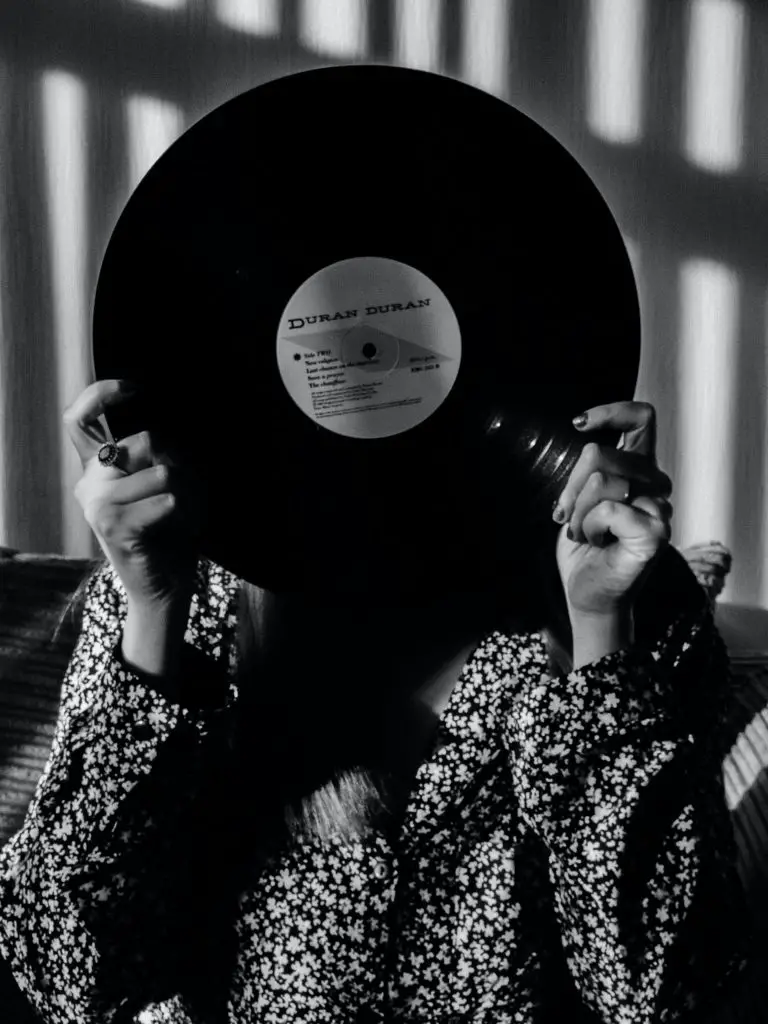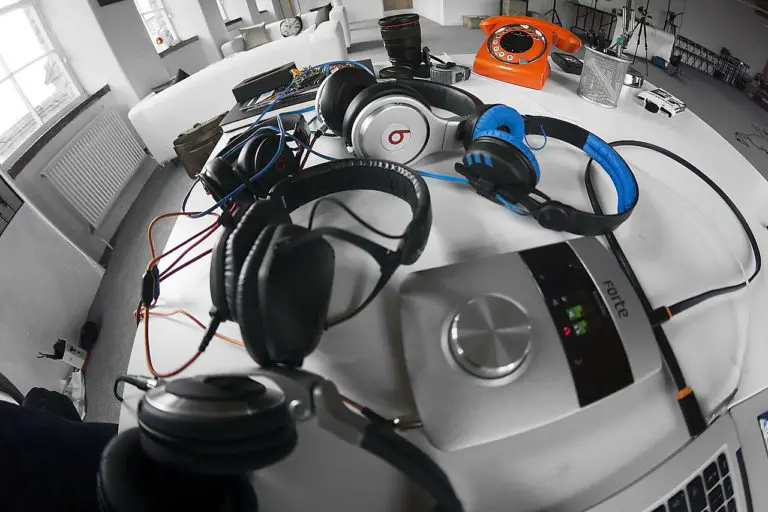Turntable vs Record Player – How Do They Differ? What Should You Buy?
“Turntable” and “record player” are often used interchangeably. The fact is, these are two separate things. The distinction is critical if you want to buy something to play vinyl records with. So, in comparing a turntable vs record player, what’s the difference?
A turntable reads the music on a vinyl record but can not replay it. It may or may not come with a pre-amp, which prepares the music to be amplified. Every record player includes a turntable but is an integrated system with a turntable, phono pre-amp, amplifier, and speaker.
The components and capabilities of both turntables and record players are essential to know. Below are some (hopefully) helpful explanations of these distinctions.
What is a Turntable?
In its most basic form, a turntable is just a circular plate with a record in place with a rod in the center. Record players might have a turntable, but not all turntables are record players. The most noticeable difference is that turntables do not amplify the music.
Below, you’ll learn a bit more about the features of a turntable.
What is a Record Player?
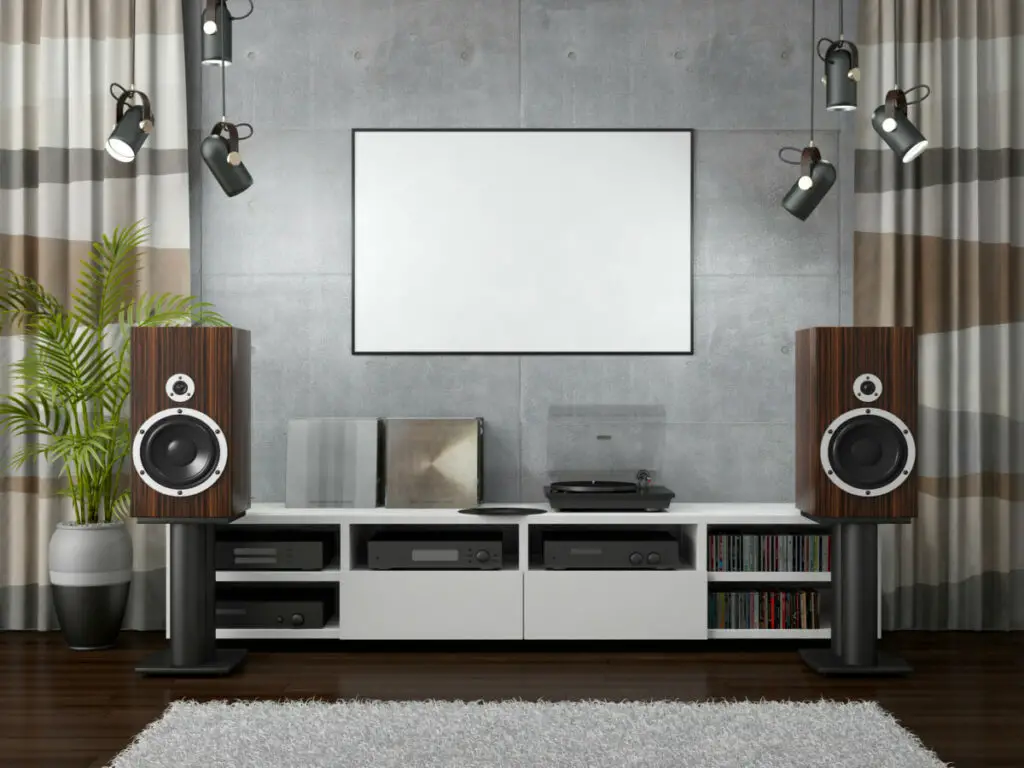
Record players are all-in-one systems with an amplifier system, turntable, and speakers in one package. These can’t be beaten regarding setup convenience and often take up much less space.
Some record players are highly portable. Technology has vastly improved since the introduction of the record player. So, you’ll find more compact and efficient systems.
What Makes Up a Turntable? [The Different Parts]
Below are all of the different parts that likely come with your turntable.
The motor
The motor, also known as the drive, spins the platter. Turntables have two types of motor drives – the belt drive and the direct drive.
Direct drive turntables vs belt drive turntables
Direct drives allow for more variable spin control and take no time to start spinning the turntable, making them popular among DJs. However, they can sometimes leak noise as they sit directly underneath the record. Direct drives are the more modern of the two systems.
Belt drives can take a second or two to get up to speed, using a belt to turn the system indirectly. Still, they are usually more well-isolated from the rest of the turntable, making them quieter and reducing the chance of the stylus, or the needle that runs over the disc’s grooves, picking up the background motor noise.
The tonearm
The tonearm keeps the needle in place and traverses the record from the inside to the outside while the vibrations from the needle move up a metal strip and are picked up by a magnetic coil inside the cartridge. These electronic signals, which are stereophonic, then travel down wires that run the length of the tonearm.
The Cartridge and Stylus
The cartridge houses the stylus and is mounted at the end of the tonearm. As the stylus traces the grooves of the spinning record, it vibrates. The cartridge converts these vibrations into an electrical signal, which is then sent to the amplifier.
The Counterweight
Located at the back of the tonearm, the counterweight allows you to balance the tonearm and set the correct tracking force for the stylus. Proper adjustment is crucial for optimal sound reproduction and to prevent potential damage to your records.
The Dust Cover
While not directly related to the sound, most turntables come with a dust cover. This lid can be closed when the player is not in use, protecting the delicate components from dust and accidental damage. Some dust covers can also be closed during playback to reduce the effect of airborne vibrations.
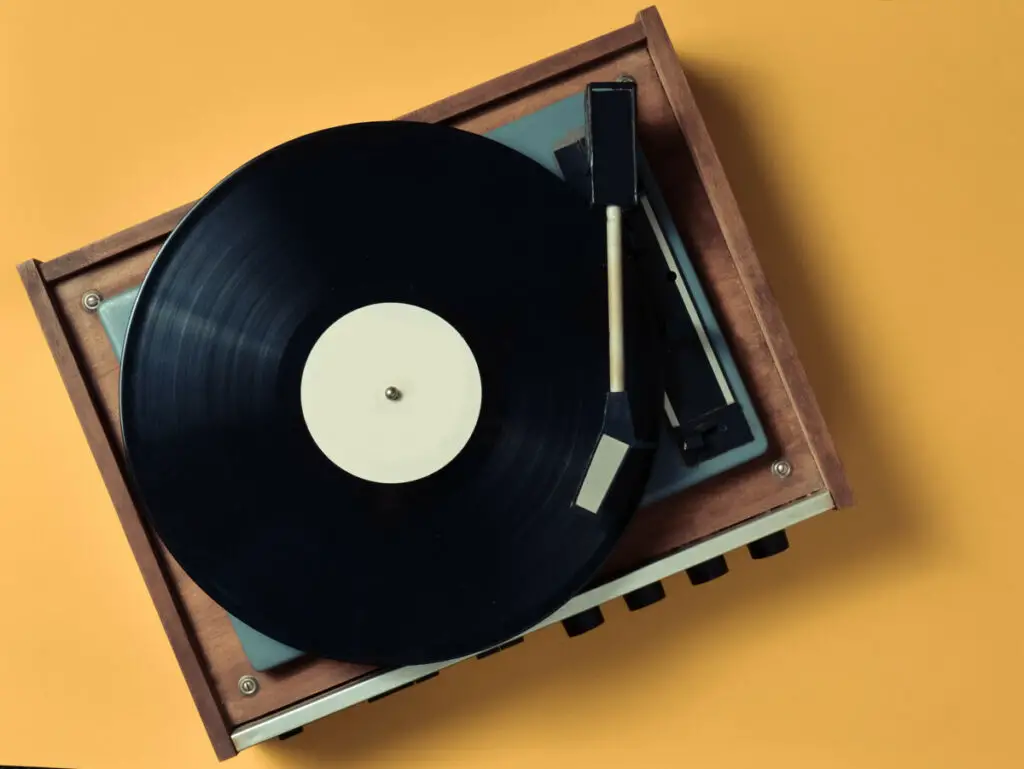
What Makes Up a Record Player? [The Different Parts]
Below are all the parts that make up standard record players.
The amplifier
In a record player, the amplifier is a key component that takes the weak signal from the pre-amp and boosts it to a level that can drive the speakers, turning the signal into audible sound. The quality of the amplifier can have a substantial effect on the final sound output.
The pre-amp
The pre-amp boosts the phono-level signal from the cartridge to a line-level signal with which the amplifier can work. It’s necessary to alter the signals picked up from the cartridge.
First, the pre-amp boosts the signals received from a low “phono” voltage of 0.005 volts (hence the name) to a “line level” frequency of 0.3 volts. This prepares the sound to then be amplified further.
The pre-amp is also needed because most records are compressed in a process that boosts high frequencies and minimizes low ones. So the pre-amp corrects these changes to reproduce the sound on the record as it was initially recorded.
Some record players offer a switchable pre-amp, allowing you to turn it off if you want to use an external one for better sound quality.
The amplifier increases the voltage of the sound so that speakers can play it. Some speakers, known as active speakers, include an amplifier. Speakers that don’t have an amplifier are known as passive speakers.
The speakers
One of the main features of a record player that distinguishes it from a turntable is the inclusion of built-in speakers. These allow you to listen to your vinyl records without needing separate external speakers. The quality and power of these speakers can vary widely, and they generally won’t match the performance of dedicated external speakers.
The controls
Record players usually have a set of controls, including a power switch, volume control, speed selector (to switch between 33, 45, or 78 RPM), and sometimes a tone control to adjust the bass and treble. These controls provide basic functionality and ease of use but don’t offer the same level of detailed control as you’d find in a turntable setup.
Turntables vs Record Players – How Do They Compare
Having explored the various components of turntables and record players, we can now delve into the fundamental differences between these two types of devices. They may seem similar on the surface, especially to the untrained eye, but understanding their disparities is crucial when choosing which one best suits your needs.
Customization and Upgradeability
One of the main differences between turntables and record players lies in their levels of customization and upgradeability. A turntable is part of a broader audio system, and each component can be selected, upgraded, or replaced according to the user’s preference. From cartridges and styli to pre-amps and speakers, the ability to customize is virtually limitless. This modularity allows users to achieve the desired sound quality and characteristics.
In contrast, record players are all-in-one units. While convenient, their components are generally not upgradeable. You’re stuck with the quality of the built-in components, which may not match the performance of dedicated, standalone parts found in a turntable setup.
Sound Quality
Given their upgradeable nature and the capacity to include high-quality components, turntables generally deliver superior sound quality compared to record players. The ability to adjust various parameters, such as tracking force and anti-skating, also allows turntables to extract more detail from the vinyl grooves, enhancing the listening experience.
On the other hand, while offering decent sound quality sufficient for casual listening, record players may not provide the same level of audio fidelity due to the limitations of their built-in components. However, this does not mean all record players sound bad – there are high-quality models out there that can deliver satisfying performance.
You will likely want a separate pre-amp and an amplifier or receiver for the best sound quality. Some higher-end receivers are also excellent at pre-amping, amplifying, and playing music from turntables. This makes them sleek, convenient, and high quality. However, these tend to be extremely expensive.
Price and Ease of Use
Turntables are more expensive because they require additional components like amplifiers and speakers. Moreover, pursuing higher sound quality and the ability to customize often leads to further investment.
Being all-in-one units, record players generally come at a lower price point. They’re also easier to set up and use, making them a popular choice for beginners or those who prefer convenience over customization.
Because the speakers and other parts are all in the same container or housing, audio playback may not be as pure as what you would get from a standalone hi-fi system comprising separate compoThise, this won’t for most people matter, but for audiophiles and those looking to get serious about record collecting, a separate turntable may be preferable.
Which Should I Buy, a Record Player or a Turntable?
In a battle between turntables and record players, both are amazing tools. But in picking just one, your choice depends on how you plan to use it.
Turntables have one advantage: sound quality potential. If you do your research and buy the right equipment, you’ll have an awesome sound system any audiophile would be jealous of. But, if you have a small apartment or budget, your turntable might be more frustrating than cool.
Record players are cheaper, take up less space, and let you play your vinyl collection without any setup. They are much more convenient, but they might not be for those with extensive sound setups who desire high-quality audio.
Keep these in mind when browsing your local record store. Thanks for reading, and we hope this helps.
FAQs
Are record players automatically worse than turntables?
Not all record players are bad equipment, and plenty of high-quality record players exist. Some may love these players’ classic looks and love not needing to buy extra stuff.
Do separate amps provide more sound quality?
You will likely want a separate pre-amp and an amplifier or receiver for the best sound quality. Some higher-end receivers are also excellent at pre-amping, amplifying, and playing music from turntables. This makes them sleek, convenient, and high quality. However, these tend to be extremely expensive.
Can you play any vinyl record on a turntable and a record player?
Both turntables and record players can play vinyl records, provided they support the record’s speed. Most devices support 33 1/3 RPM (for LPs) and 45 RPM (for singles). Some also support 78 RPM records, but these are less common.
Is a turntable better than a record player for sound quality?
In general, turntables can offer superior sound quality to record players due to their upgradeable components and adjustable settings. However, the overall sound quality will also depend on the quality of the other components in your audio setup, such as the amplifier and speakers.
Q3: Do you need speakers for a turntable?
Yes, unlike record players that come with built-in speakers, turntables require external speakers. In addition to speakers, you may also need a pre-amp and an amplifier unless your turntable has this built-in, making it a record player.
Can a record player damage your records?
A poorly maintained or low-quality record player can potentially damage your records over time, primarily due to excessive stylus pressure. Higher-end record players and turntables with adjustable tonearms allow you to set the proper tracking force, minimizing the risk of damage.
Can you connect a turntable to any speakers?
Turntables need a phono pre-amp to boost their signal to line level. If your speakers have a built-in pre-amp or an external pre-amp, you can connect a turntable to those speakers. Some turntables also come with a built-in pre-amp, connecting them directly to any speakers.
Are record players easier to use than turntables?
Yes, generally speaking, record players are more user-friendly than turntables. They are plug-and-play devices that include all the necessary components to play records. On the other hand, setting up a turntable involves a bit more technical know-how, as it’s part of a larger audio system.

